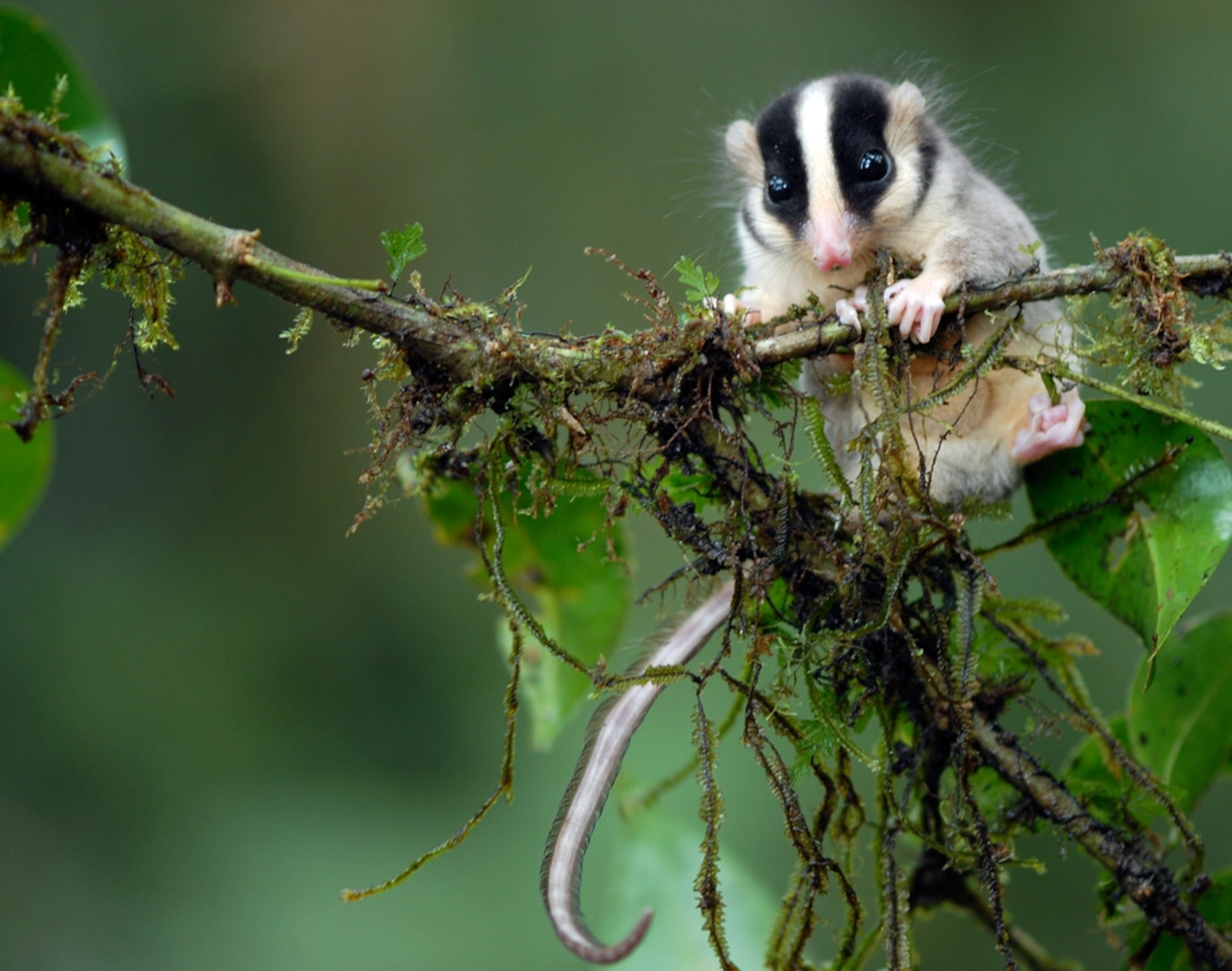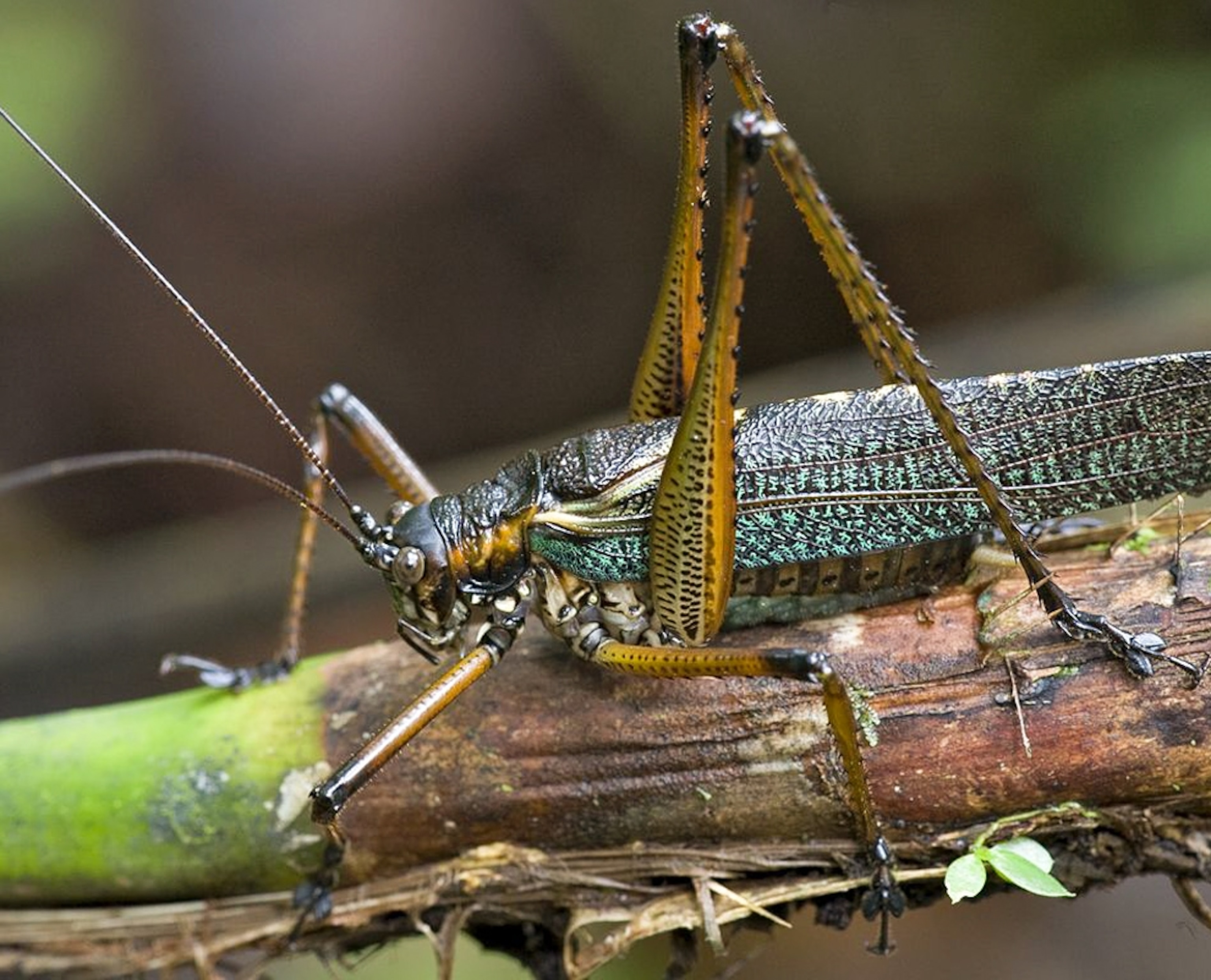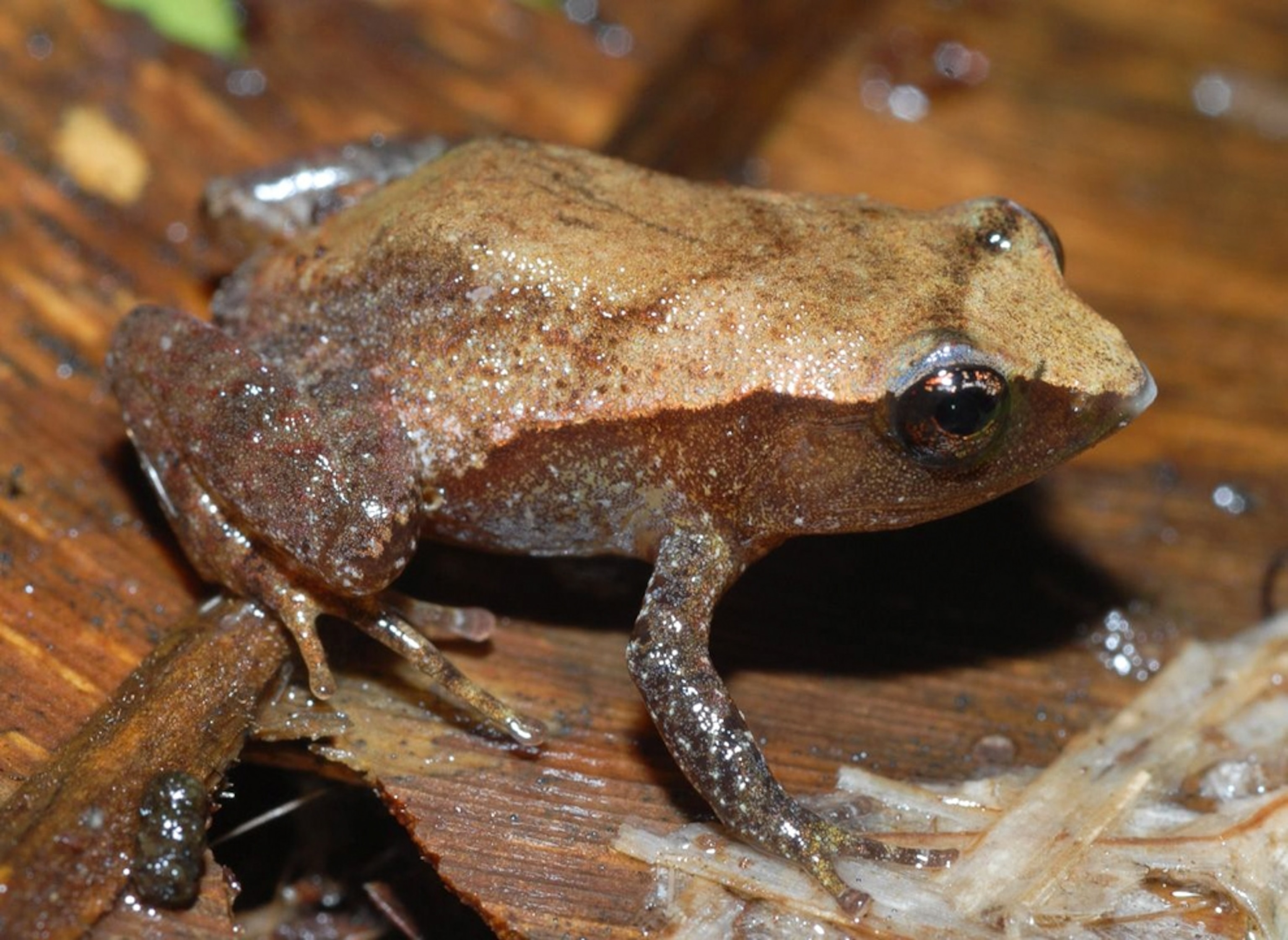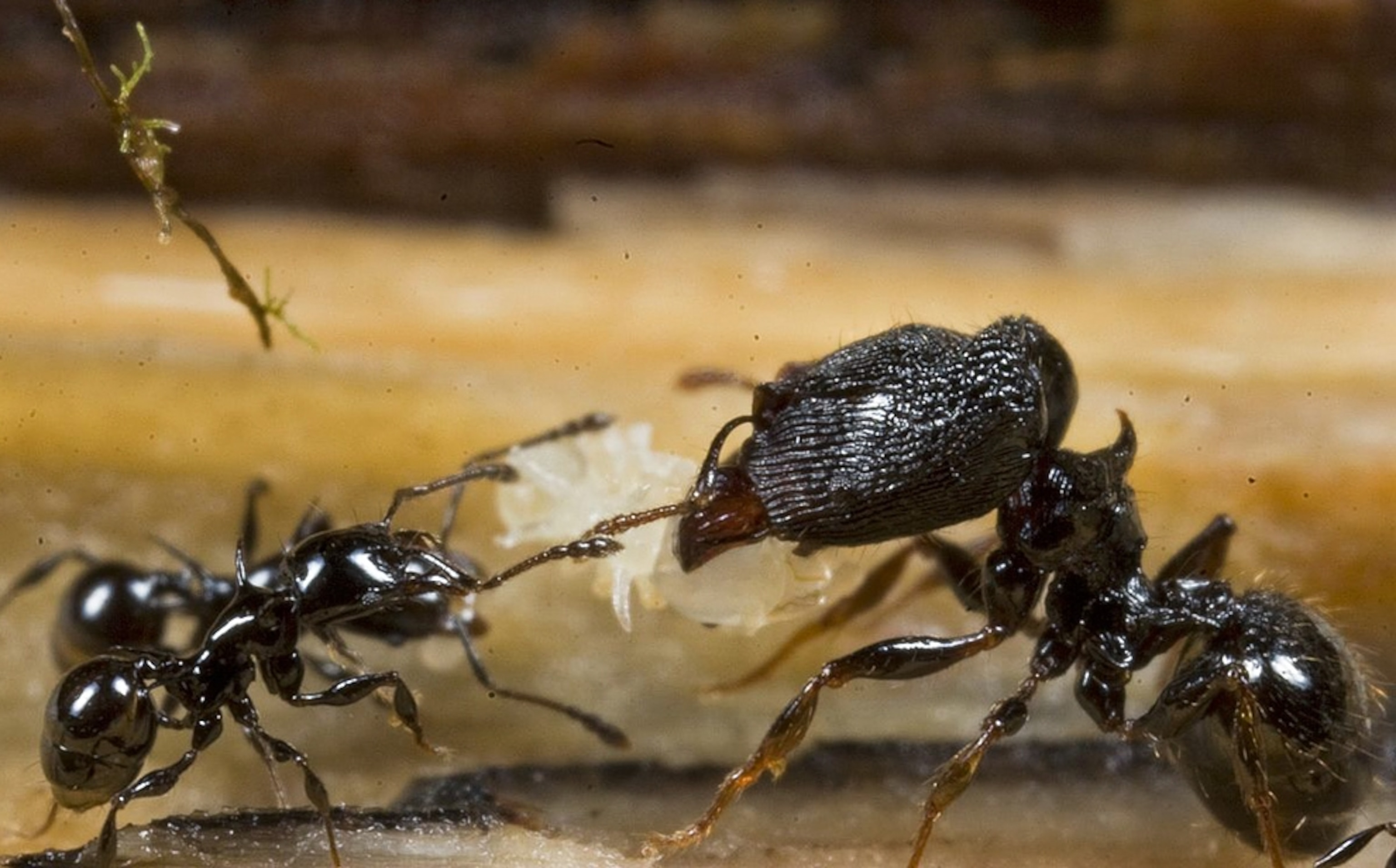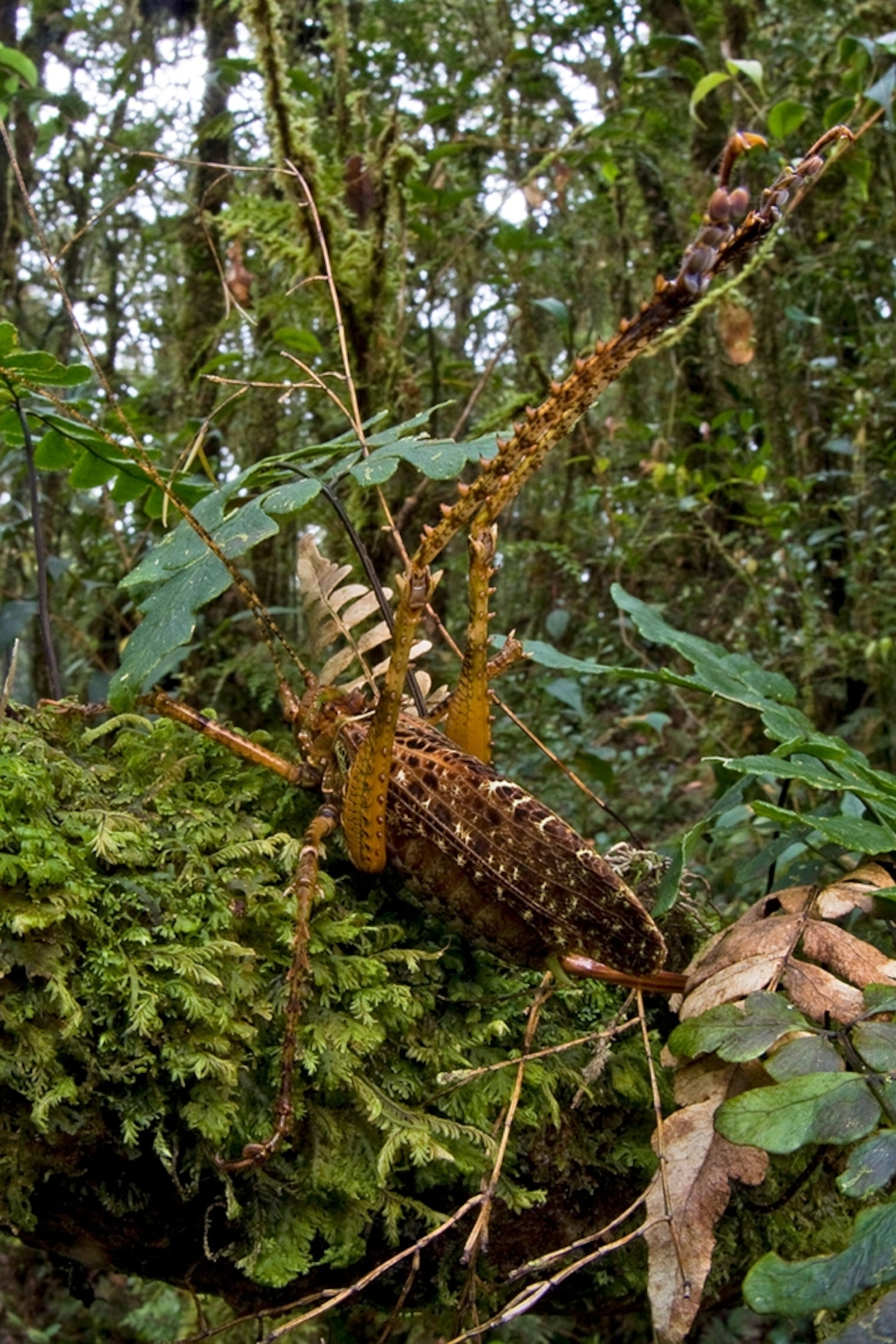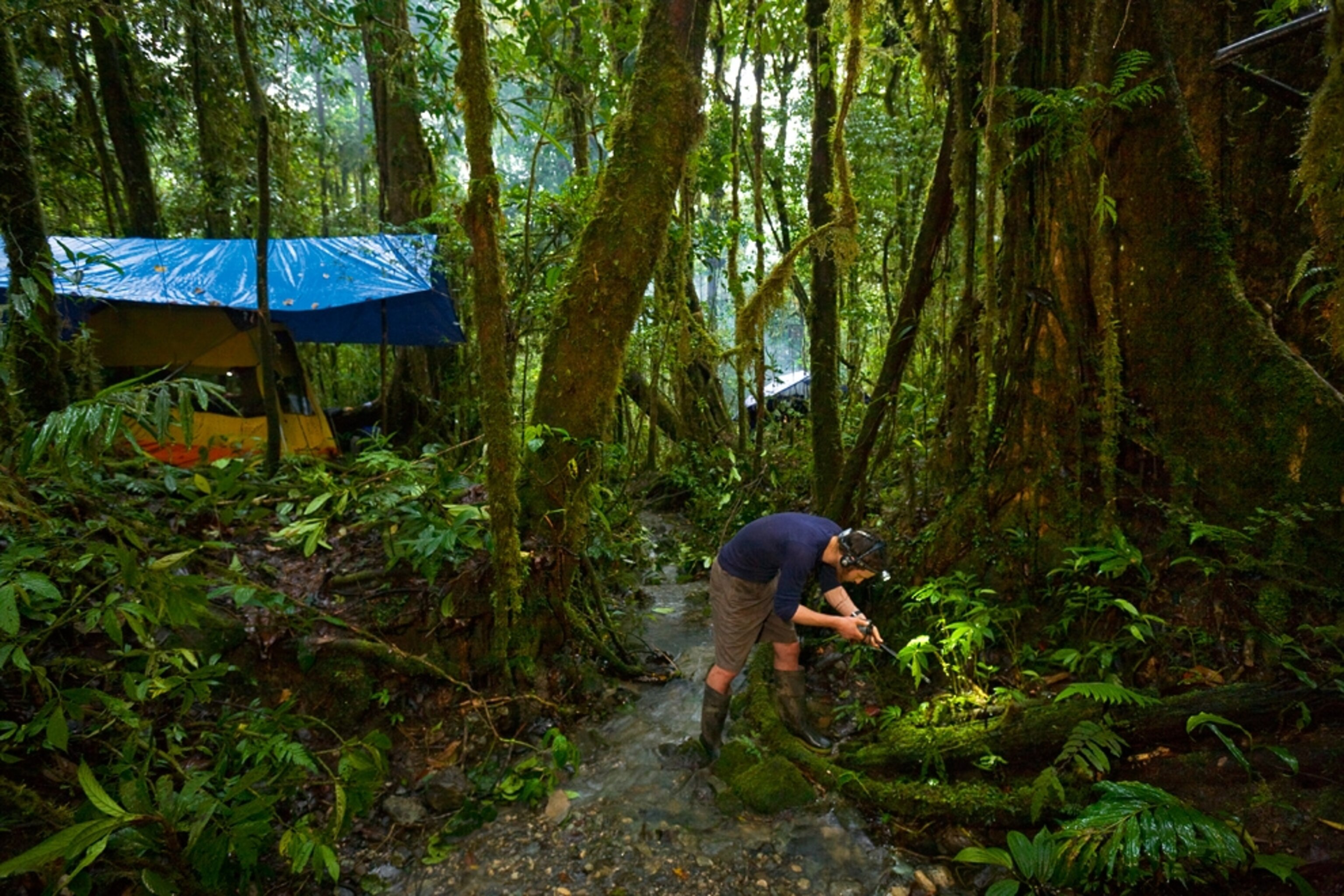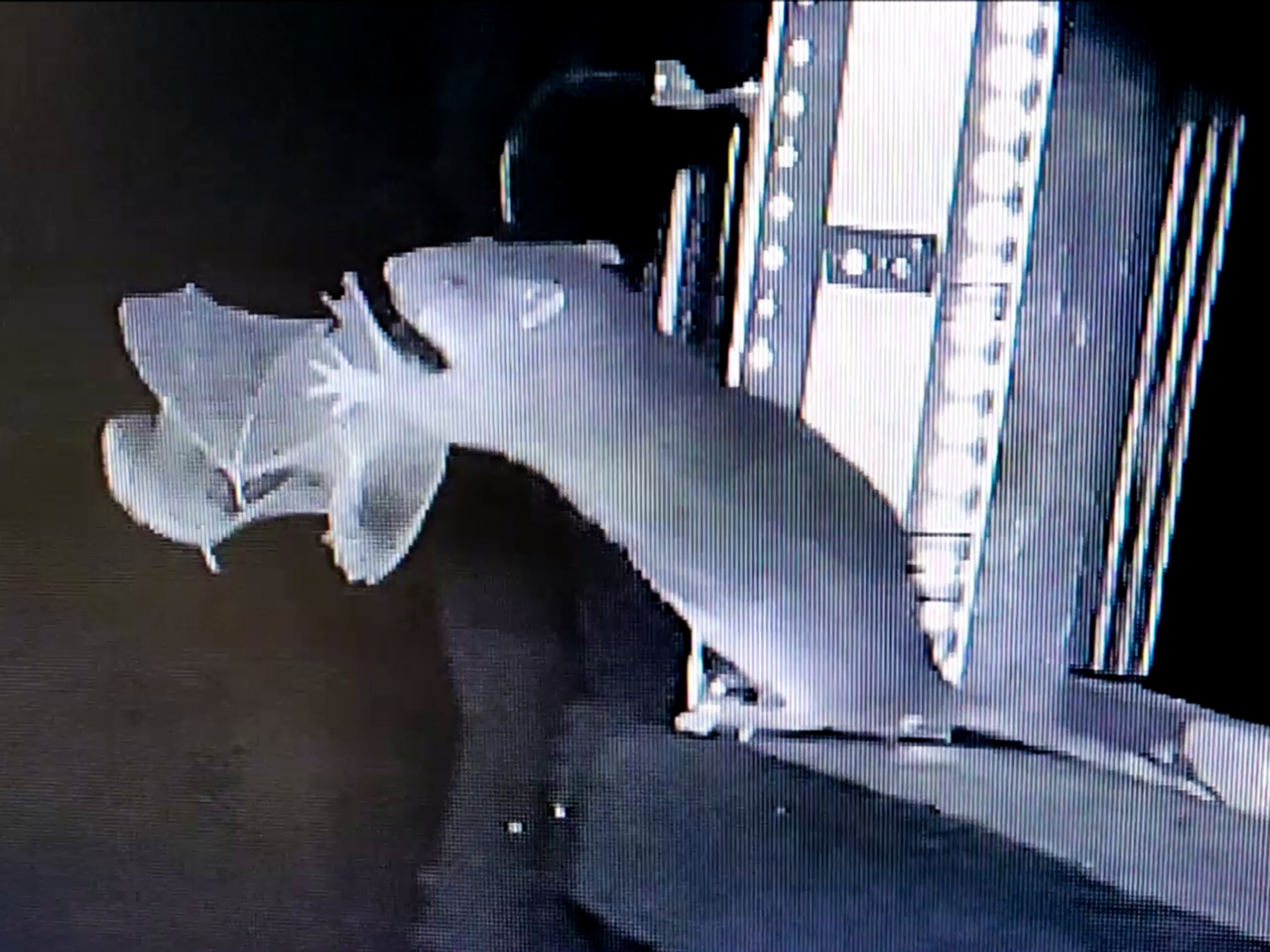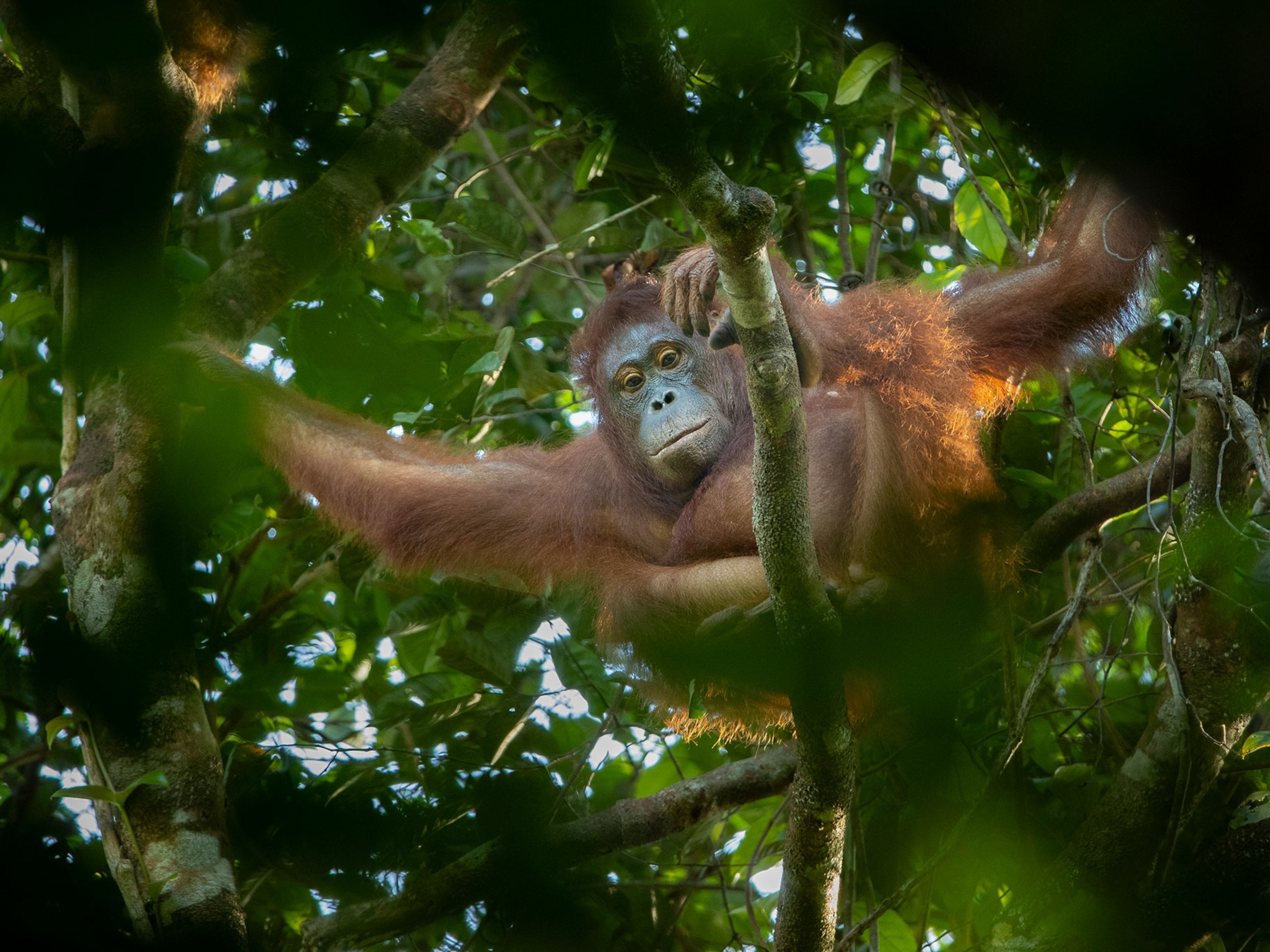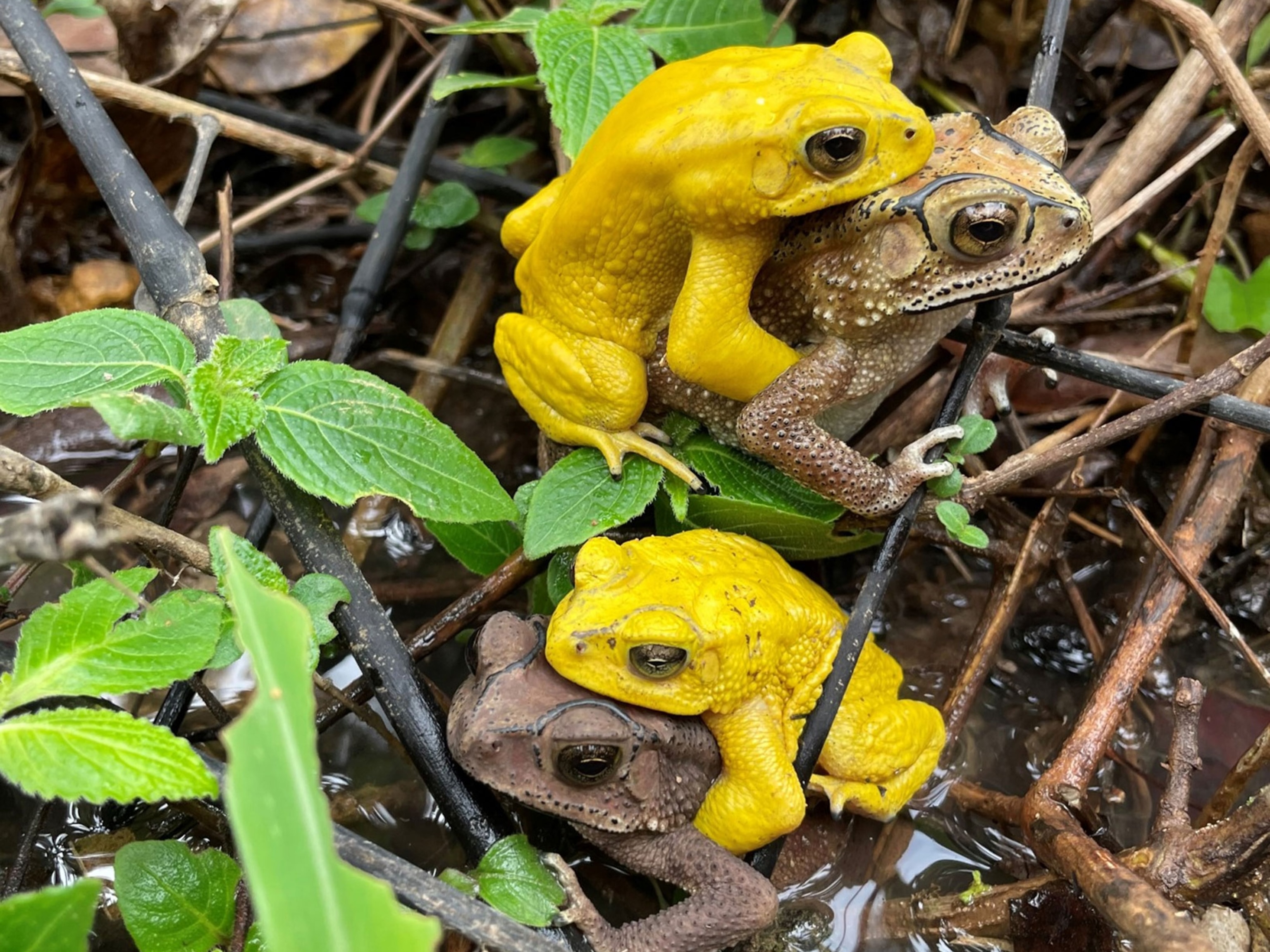1 of 10
Photograph courtesy Piotr Naskrecki, Conservation International
Pictures: Tube-Nosed Bat, More Rare Species Found
A bat with trumpet-like nostrils and a katydid that "aims for the eyes" are among the hundreds of species recently seen in Papua New Guinea.
October 6, 2010


